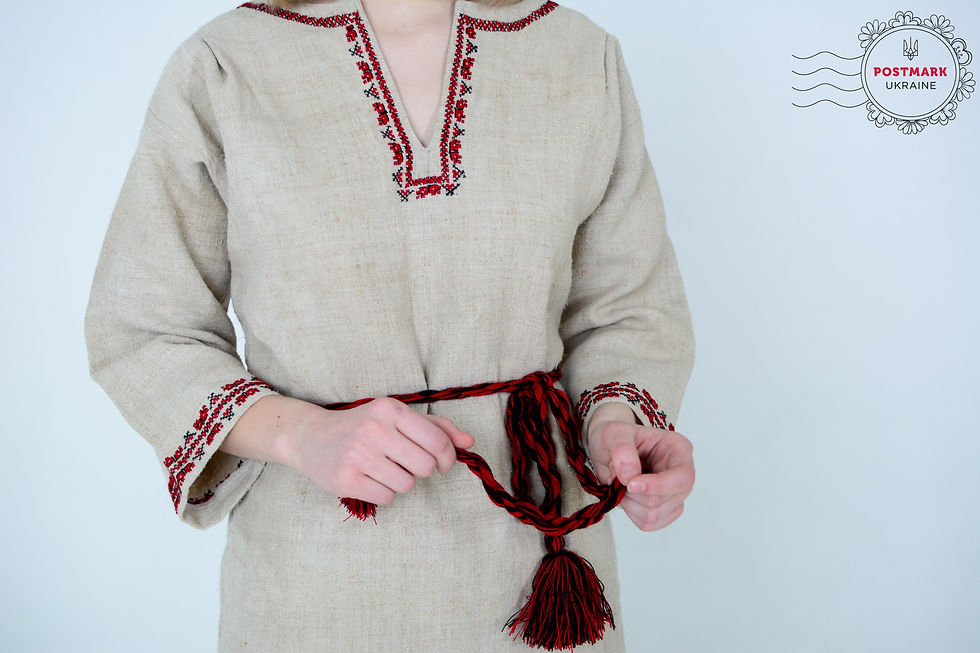VYSHYVANKA NATION: Donetsk region
- Postmark Ukraine

- Aug 17, 2020
- 2 min read
Today we continue to talk about the peculiarities of embroidery in different regions of Ukraine. The next stop is Donetsk, which is located in the east of the country and Donetsk region embroidery was much affected by the specific cultural atmosphere.

For the last two-three centuries the population of the Donetsk region has been created out of representatives of different nations (the Georgians, the Germans, the Greeks, the Bulgarians, the Armenians, the Russians, and many others - about 140) whose culture influenced the Ukrainian embroidery of the local people.

There are many different embroidery technics which were widely used in the Donetsk region, except perhaps "yavorivka" and "nizinka". Red, black and white are the most preferable colours used in that region, as well, decorated sleeves are more preferable than collars and bottom.

The ornaments of Eastern Ukraine are based on mythical parallels. They are the oldest - the stars, the sun, the moon. Embroidered patterns were combined with light mesh and cutting. There are also ornaments with folklore origins.

Traditional women's shirts of Donetsk region were with straight inserts, sewn on the base (with skirting boards), with a hem or trim. The bottom of the sleeves was gathered on a thread. Embroidered sleeves, inserts, sometimes hem and collar. The men's traditional shirt was tunic-like, with an embroidered stand-up collar, a wide cuffs. The obligatory attribute of a man's suit was a short vest of dark color.

It should be emphasized that there are different casual and holiday embroideries. On casual embroidered shirts the pattern is more modest - mostly gray. Speaking about towels, we must say that they may be used for windows, icons, weddings, lullabies, and households. All differ in length, width, and a number of patterns. For example, for windows, the vegetative ornament prevails, for icons, it is combined with geometric. And everyday towels without embroidery at all are a simple linen fabric.


The photo shows embroidered shirts and towels from Postmark Ukraine assortment and the Slovyansk Museum of Local Lore.



Comments